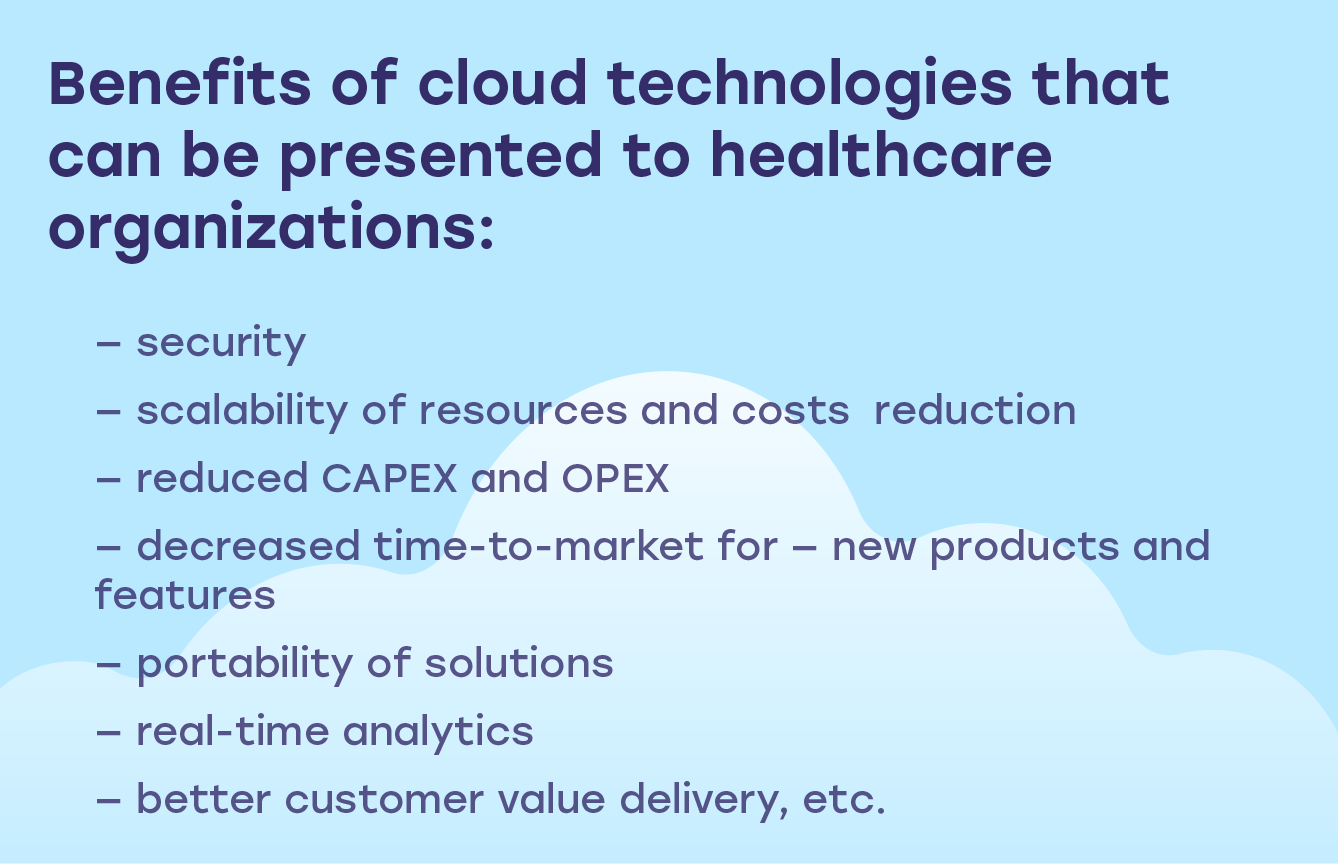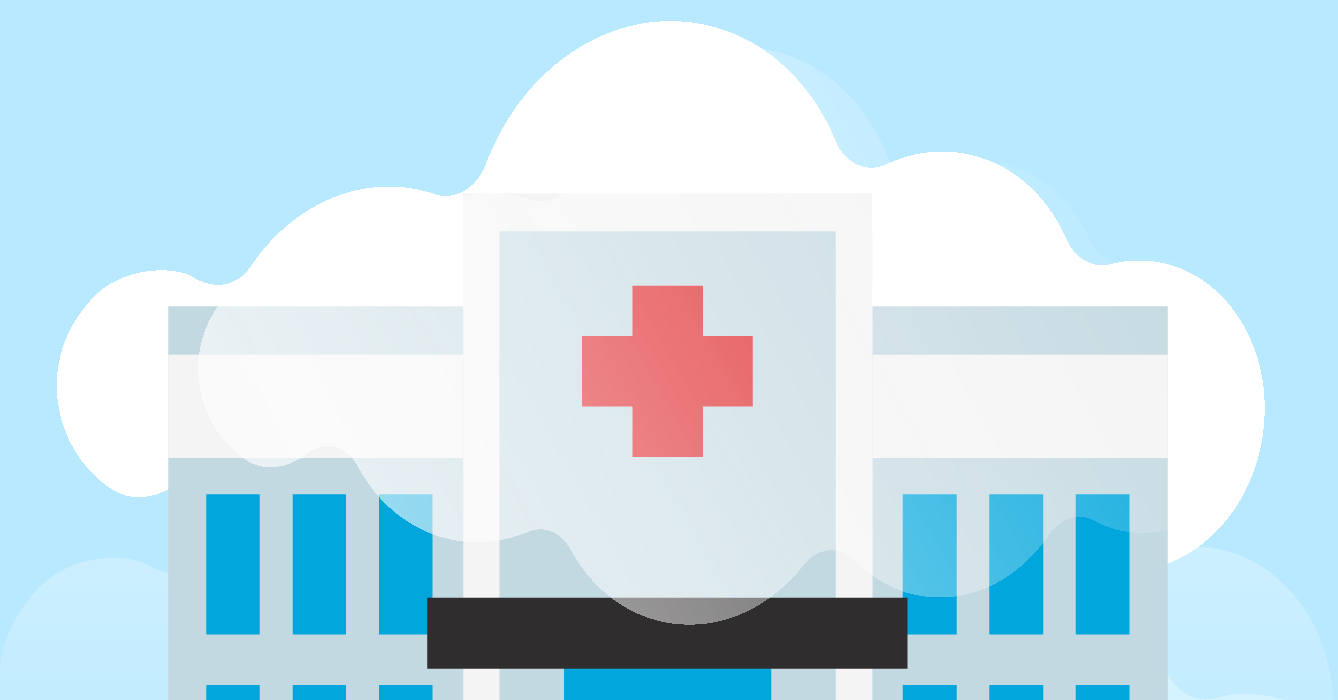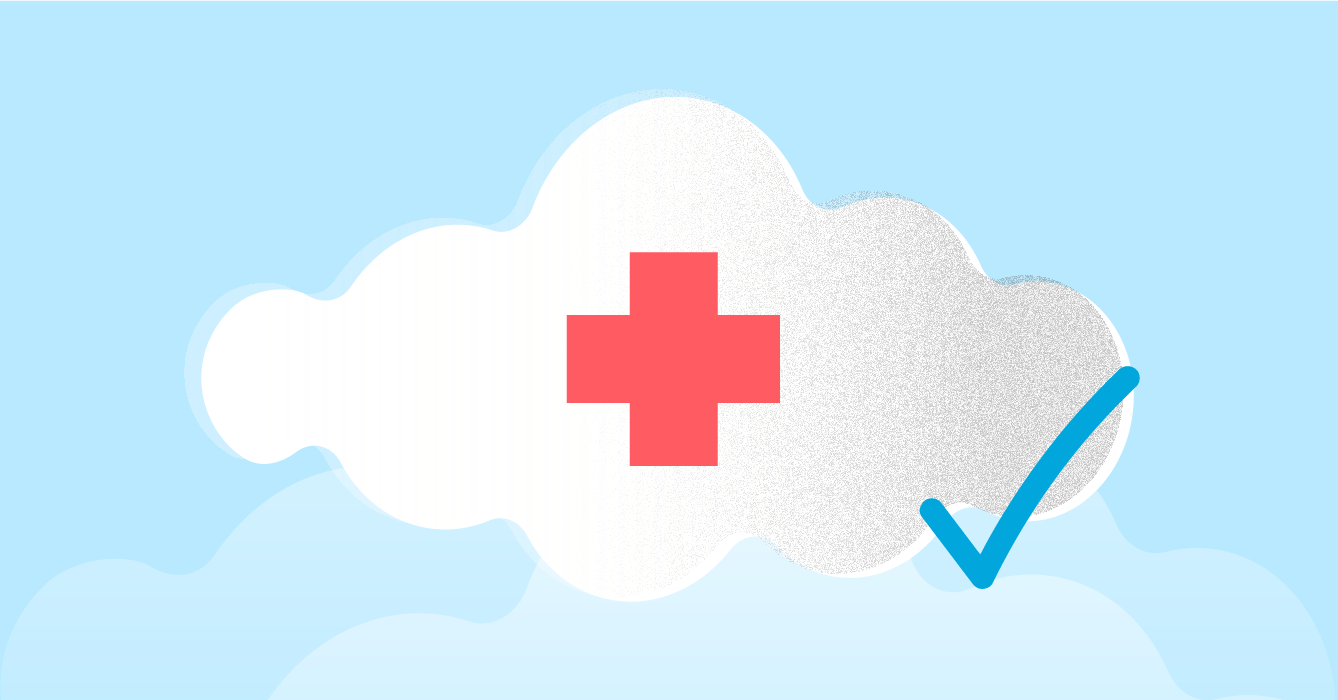Benefits of cloud computing in the healthcare industry
The healthcare industry is one of the most crucial components of the economy, as it has such a direct impact on human lives, health, and well-being. This is why utilizing the latest and the best technology available is essential. We describe the benefits of cloud computing in the healthcare industry.
Patient data, personally identifying information or PII, financial data for the medical institution — all these details must be securely collected, processed and stored within the IT infrastructure of various healthcare organizations. However, these same records are a prime target for various hackers and fraudsters, so regulatory compliance, as well as patient data privacy and security of data storage, are the primary concerns of running such systems, as the multiple researches prove.
Cloud platforms are by definition the pinnacles of technology and the most rigorous security, as they have to safeguard thousands of users utilizing millions of servers. Both built-in and open-source cloud security solutions are reliable — if they are used and configured correctly. Thus said, most healthcare organizations still perceive the cloud as an unreliable medium due to numerous iCloud leaks of celeb photos and various other malware and spyware attacks.
The point is, almost all of these breaches originated in the lax security policies on the user’s part, not from the technical vulnerabilities of the cloud platforms, and as the healthcare industry treats security and compliance with utmost seriousness, these issues are least likely to arise. As a matter of fact, the $600 million AWS contract with the US DoD and CIA, as well as 80% of Fortune 500 companies using Microsoft Azure are proofs enough that serious business has strong faith in cloud providers’ security measures, so the cloud is a reliable destination for storing the protected health information.
Cloud services for healthcare providers
However, security is by far not the only benefit the cloud technology can provide to healthcare organizations. The rest includes:
- security
- scalability of resources and costs reduction
- reduced CAPEX and OPEX
- decreased time-to-market for new products and features
- portability of solutions
- real-time analytics
- better customer value delivery, etc.
How does cloud computing help the healthcare industry then?
Scalability of resources and costs reduction
The Internet traffic workloads are not constant in any industry and healthcare is not an exclusion. While some apps do work 24/7, the majority of usage happens during daytime, so that’s when the bulk of resources needed and you have to rent enough servers in the data center to meet that demand. However, these resources remain unused for the most part of the day and you still have to pay for them to have them at hand during peak workload times.
The virtualized cloud infrastructure enables scaling the resources up and down quickly so that you can analyze the usage patterns and predict the future workloads based on statistics. Every cloud provider has an auto-scaling feature, so that when you need additional resources — they are provisioned automatically and are dismissed once they are not needed anymore. This means you pay only for the resources you actually use and save a ton of money as compared to running dedicated servers in traditional data centers.
Reduced CAPEX and OPEX
You don’t purchase the cloud resources, you rent them. They are already in place and are pre-configured when you require them, so your CAPEX is close to zero. As we explained before you Pay-as-you-Go with the cloud computing and most of the tasks you usually pay the data center staff for are automated, so your OPEX is also reduced greatly.To say more, once the CI/CD (Continuous Integration and Delivery) pipelines are in place, you won’t need as many IT engineers to support the infrastructure, so this can help optimize the expenditure tremendously.
Decreased time-to-market for new products and features
Once more, after the CI/CD pipelines are configured, the most time-consuming aspects of IT infrastructure management are taken care of (development and testing environments provisioning and configuration, along with production environment monitoring, backups, and disaster recovery). Actually, DevOps best practices minimize the risk of post-release disasters, but sorting out all the issues of legacy infrastructure run by the healthcare organizations can take quite a while, so backups and restoration are an essential part of daily infrastructure management operations. However, once the testing and updates become automated and streamlined, the time-to-market for new apps and features shortens drastically.
Portability of solutions
Unlike using rigid configurations of dedicated servers in traditional data centers, utilizing virtualized cloud infrastructure with lots of open-source components means your solutions are quite portable. It is pretty easy to avoid vendor lock-in if you split your apps to microservices that communicate through APIs and can use interchangeable cloud platform features for data storage and processing. Thus said, the healthcare organizations can choose the best public cloud provider for their needs, be it AWS, Google Cloud, MS Azure, DigitalOcean or any other provider — or even go for a private cloud solution with OpenStack and OpenShift.
Real-time analytics
Using cloud infrastructure enables the business to utilize Big Data analytics and Machine LEarning models to get the most value of their hardware and software. From personalizing end-user customer experiences to optimizing the infrastructure performance or predicting the diagnosis based on symptoms and historical data, Machine Learning gets a lot of exciting and useful applications in the healthcare industry.
Better customer value delivery
All the points above lead to this result — the healthcare provider gets their IT infrastructure spending optimized, their systems more performant, their products maintained better and updated faster, their customer-facing systems operating seamlessly — all this while ensuring patient data storage security and compliance. Naturally, this is a tremendous improvement over the situation many companies in the healthcare industry find themselves now — running legacy infrastructure with slow product release cycles, unpredictable outcomes and constantly putting out the fires.
Thus said, how does a healthcare business achieve such a result? Naturally, the transition from legacy infrastructure to virtualized cloud environments and adopting the latest DevOps practices does not come easy. However, the help of a reputable Managed Services Provider allows achieving this result with a predictable time frame and under budget.
Adopting cloud computing and DevOps in healthcare organizations
Like any methodology, the DevOps approach to software delivery and IT infrastructure management is composed of three major components: culture, processes, and tools.
- DevOps culture emphasizes intercommunication and collaboration between all the parties involved in the process of developing and managing the software and services. There are no silos of responsibilities and tools, no separate goals. The traditional Waterfall approach bolsters specialization to the point where the developer, the QA specialist, and the Ops engineer are more like rivals than colleagues. The devs need to produce the new code on time, the QA staff has to find out as many bugs as possible in the limited time they get, and the Ops must ensure the operational stability.
Quite the contrary, the DevOps teams communicate and collaborate with each other throughout the whole software development lifecycle. This way the Devs know how to build the app architecture to use the infrastructure best, the Ops know when to introduce the CI/CD pipelines and the QA specialists plan their automated unit testing and integrity testing environments from the start, so the whole process of developing new features for healthcare apps is streamlined, fluent and predictable. - DevOps processes can be defined through 3 core DevOps principles: IaC, CI and CD.
- IaC is Infrastructure as Code, meaning all the infrastructure states needed for running your IT operations are described using declarative language and stored in Terraform manifests. These manifests are text files used by Terraform cloud orchestration tool to store the settings and dependencies that define your infrastructure.
These files are stored as any other code in your Version Control System (like Github) and can be easily versioned and adjusted by any team member. Therefore, any infrastructure state can be provisioned by simply loading the corresponding manifest, ensuring the continuity of infrastructure configurations throughout the whole SDLC, effectively removing the “works well on my machine” situation that plagues the Waterfall software development processes. - CI is Continuous Integration, meaning the feedback from the company stakeholders and customers can be integrated into the product very quickly, constantly delivering more value to your customers. To enable that, the code of new product features and apps is developed in very short sprints instead of long branches and is constantly integrated into the main project trunk (at the end of each working day or even more frequently.)
Some companies like Google went as far as configuring their CI pipelines to turn each commit into a new release, pushed into production through in-app updates and rolling releases — and the customers don’t experience any downtime. Just compare this to semi-annual or annual releases with huge post-release crashes and the need to have the disaster recovery strategy in place — and you’ll see which approach is better. - CD is Continuous Delivery, meaning every IT infrastructure operation that can be automated is automated. This enables the Devs to automatically provision the required environments in a matter of seconds, without the need to issue a request to the Ops engineers and wait for the approval of their request and provisioning/configuration of said servers. The same is applied to managing the production environments, so your IT department can invest their effort in improving the infrastructure, removing the bottlenecks and paying off the accumulated technical debt, instead of doing repetitive and error-prone server configuration tasks all the time.
- DevOps tools in play include the cloud-based services from cloud providers like AWS, GCP and others, along with open-source platforms like Terraform, Kubernetes, Jenkins, Docker, Ansible, Prometheus + Grafana, Sumologic, Splunk, Datadog and others required to enable the IaC, CI and CD components of the DevOps workflow. All of these enable stable, predictable, transparent, reliable and cost-efficient software development and IT infrastructure management for any business, including the healthcare industry.
Conclusions on the benefits of cloud computing for healthcare organizations
To sum it up, there are innumerous benefits of cloud computing for the healthcare industry. More cost-effective infrastructure maintenance, more predictable software development, better performance across the organization, better value delivery for the customers. The only thing needed to achieve this is partnering with one of the top 10 Managed Services Providers worldwide and perform a transition to DevOps workflows and cloud computing with their help.
Should you want to partner with IT Svit or want to ask any other questions — we are always glad to help!



